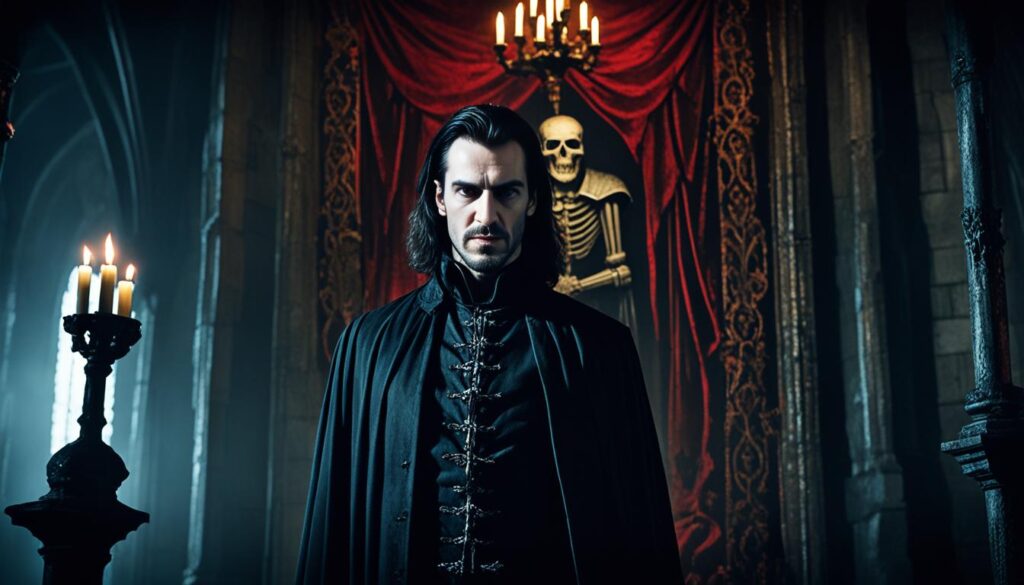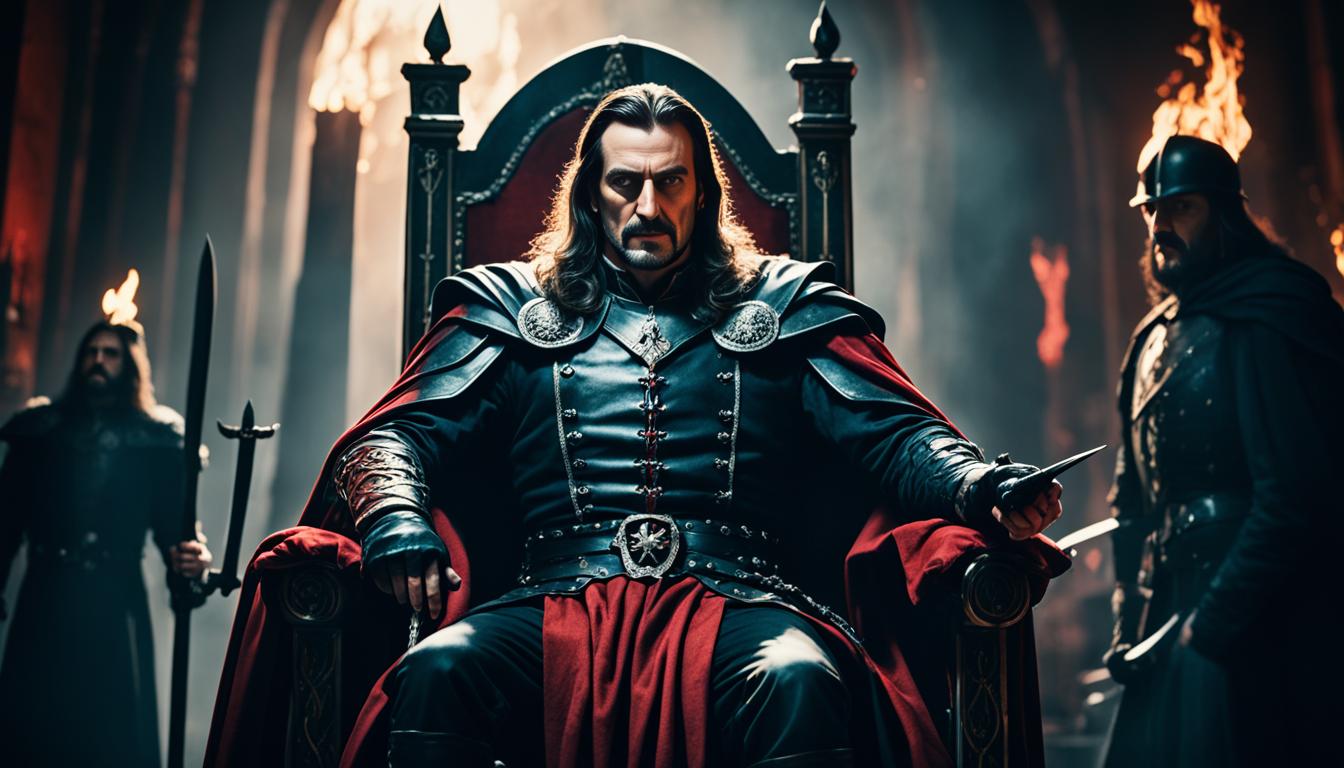Bram Stoker’s Dracula has scared readers since 1897. This Gothic horror story was inspired by a real person: Vlad the Impaler. The story of the fictional Dracula and the real Vlad III, Prince of Wallachia, has captured people’s interest for many years.
Vlad III was born in Transylvania in 1431. He got his scary name for his brutal ways. Stoker found out about Vlad Tepes in William Wilkinson’s 1820 book while writing his novel. This led to the creation of a famous character, mixing real history with fiction in a thrilling horror story.
Key Takeaways
- Bram Stoker’s Dracula was inspired by Vlad the Impaler
- Vlad III was born in Transylvania in 1431
- Stoker discovered Vlad Tepes in William Wilkinson’s 1820 book
- The vampire count combines historical facts with fictional elements
- Dracula has become an enduring figure in Gothic horror fiction
The Origins of Bram Stoker’s Vampire Count
Bram Stoker’s famous vampire, Count Dracula, came from a mix of Transylvanian folklore and historical studies. He found the name “Dracula” in a book about Wallachia and Moldavia by Wilkinson. This sparked his creativity, leading to the birth of a legendary character.
The name “Dracula” links back to Vlad III’s family history. His father, Vlad II Dracul, was part of the Order of the Dragon. In old Romanian, “drac” meant dragon, but today it’s linked to the Devil. Stoker was drawn to this dark connection, adding it to his vampire story.
Stoker was inspired by Vlad’s past, but his Dracula is far from the real Vlad III. The fictional character blends historical facts with vampire myths. This mix has enthralled readers for many years.
The blend of history and vampire tales made a unique character. Stoker’s Dracula has become a key figure in gothic horror. It has inspired many adaptations and new takes in popular culture.
Dracula Based on Vlad: Separating Fact from Fiction

In 1972, Radu Florescu and Raymond T. McNally’s book “In Search of Dracula” made the link between Vlad III and Dracula popular. This sparked interest in the folklore of Transylvania and its impact on Gothic horror fiction. Many think the Vampire Count was inspired by the real prince, but historians argue about how much they are connected.
Vlad III never owned land in Transylvania, despite what many believe. Bran Castle, often called “Dracula’s Castle,” was not his home. He ruled Wallachia and was known for his brutal methods, especially impaling his enemies.
Bram Stoker’s Count Dracula is mostly a product of fiction. Stoker used historical facts but mixed them with myths and his own creativity. This created a Vampire Count that grabs the attention of Gothic horror fiction fans but is far from the real Vlad III.
The lasting popularity of Dracula shows how folklore and Gothic horror can blend to create a legend. Even with weak historical ties, the Vampire Count is a key figure in literature and popular culture.
The Historical Context of Vlad the Impaler
Vlad the Impaler lived during a time of turmoil in Eastern Europe. He was part of the Order of the Dragon, a Christian military group. This group played a big role in his early life.
As a child, Vlad and his brother Radu were taken hostage by the Ottoman Empire. This event likely made him very angry with the Ottomans.
In 1456, Vlad became the ruler of Wallachia. He was known for his strong fight against the Ottoman Empire’s expansion. His use of impalement made him famous, earning him the nickname “The Impaler.” Some say he killed between 40,000 to 100,000 people during his rule.
Even though Vlad was brutal, many Romanians see him as a hero. They admire his defense against the Ottoman invasion. His mix of cruelty and bravery has made him a legend in Transylvanian folklore.
His story has inspired many tales, including vampire myths. Vlad’s life story is still fascinating today. It shows how history and legend can mix, creating stories like the famous Count Dracula.
Dracula’s Legacy: From History to Pop Culture
Vlad the Impaler’s brutal history mixed with Bram Stoker’s Dracula has deeply influenced popular culture. This mix of truth and fantasy has led to many adaptations in different media. The 1922 silent film “Nosferatu the Vampyre” was a key early take on vampires, paving the way for others.
Over time, vampire stories took in other historical figures, like Elizabeth Bathory. She was a Hungarian noblewoman known for her alleged blood rituals. Together with fictional elements, these real-life characters have kept the public interested in vampires for years.
Dracula’s influence goes beyond books and movies. Bran Castle in Transylvania, linked to Vlad III, is now a big tourist spot. People visit to feel the vibe that inspired Stoker’s classic. This shows how historical events can shape cultural trends, similar to how the Declaration of Independence has shaped American identity.
Dracula still grabs the attention of people all over the world. It shows how mixing historical facts with gothic stories can create a lasting impact. From old books to new movies, vampires stay a key part of horror and fantasy, tied to Vlad the Impaler’s dark history.

Leave a Reply